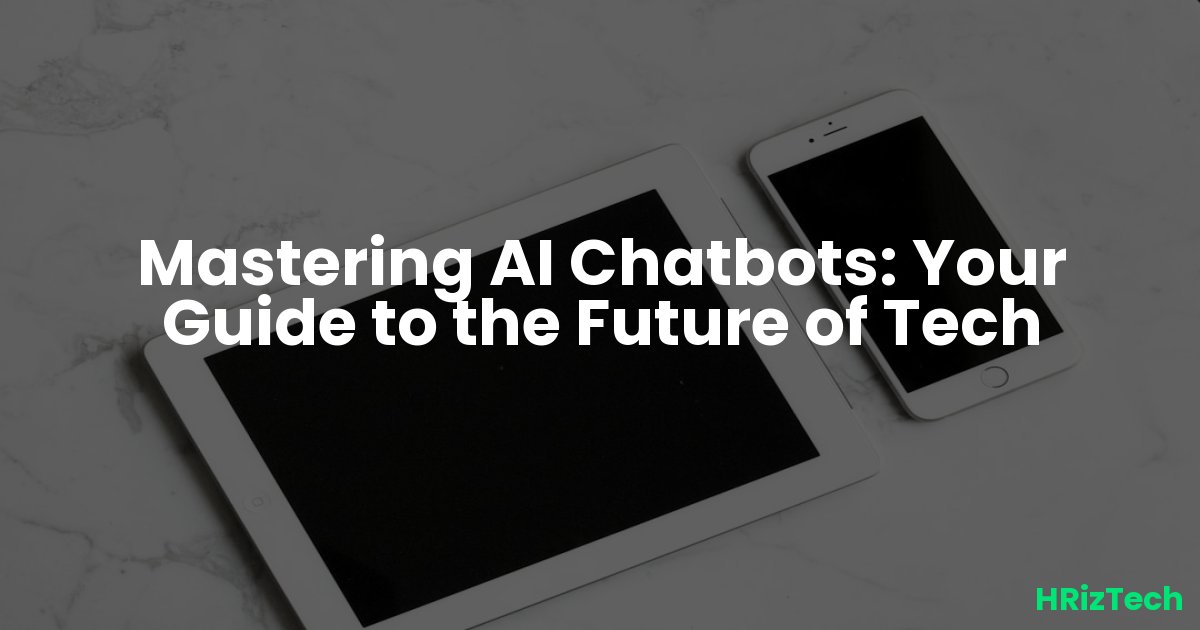Mastering AI Chatbots: Your Guide to the Future of Tech

Mastering AI Chatbots: Your Guide to the Future of Tech
Ever wondered how those super-smart chatbots work? They're everywhere, from customer service to virtual assistants, and understanding AI chatbots is becoming increasingly important, especially if you're thinking about your future career. This guide will help you understand the basics, address common challenges, and show you how to get started in this exciting field.
What is an AI Chatbot, Anyway?
Simply put, an AI chatbot is a computer program designed to simulate conversation with a human user. It uses artificial intelligence and natural language processing (NLP) to understand what you're saying and respond appropriately. Think of it as a really advanced, sophisticated version of the old "choose your own adventure" games, but much, much smarter.
The Magic Behind the Bots
The magic happens through a combination of algorithms and vast amounts of data. These bots learn from the data they are fed, getting better at understanding and responding to different types of questions and requests over time. This is what makes AI chatbots such a powerful tool.
How Do I Start Building an AI Chatbot?
Building your own AI chatbot might sound intimidating, but it's more accessible than you think! There are several platforms that make the process much easier. You don't need to be a coding expert to get started.
Step-by-Step Guide to Building a Simple Chatbot
- Choose a platform: Several user-friendly platforms like Dialogflow (Google Cloud), Amazon Lex, and Microsoft Bot Framework offer drag-and-drop interfaces and pre-built templates to simplify the development process.
- Define the chatbot's purpose: What tasks will your chatbot perform? Knowing this upfront helps you focus on the specific features you need.
- Design conversations: Plan out the different conversations your chatbot might have with users. Think about possible questions and create appropriate responses.
- Train your chatbot: Feed your chatbot with data—the more data, the better it will perform. This might involve providing examples of conversations or using pre-existing datasets.
- Test and refine: Continuously test your chatbot and make improvements based on its performance. The goal is to create a natural and helpful conversational experience.
What are the Future Trends in AI Chatbots?
AI chatbots are rapidly evolving! A 2025 Gartner report predicts that by 2027, the majority of customer service interactions will be handled by AI chatbots. We're likely to see more sophisticated bots with advanced natural language processing capabilities, capable of understanding complex nuances and emotions in human language.
Cybersecurity Concerns: A Growing Need
With the increasing reliance on AI chatbots, cybersecurity is becoming a critical concern. Protecting these systems from malicious attacks and data breaches is paramount. Expect to see significant advancements in AI-powered cybersecurity solutions in the coming years to address these challenges.
What are the Best Tools for Building AI Chatbots?
The best tool for you will depend on your specific needs and technical skills. However, some popular and user-friendly options include Dialogflow, Amazon Lex, and Microsoft Bot Framework. These platforms offer a range of features, from simple chatbots to more complex, AI-powered virtual assistants.
Remember: Start simple! Don't try to build a super-complex chatbot right away. Focus on creating a functional chatbot that solves a specific problem. Then, as you gain experience, you can add more features and improve its capabilities.
Generic Tech Topic: The Bottom Line
Mastering AI chatbots is a valuable skill in today's tech landscape. Understanding their capabilities and limitations, along with the ability to build and deploy simple chatbots, can significantly enhance your career prospects. As we move towards 2025 and beyond, the demand for AI specialists is only expected to rise. This is a field ripe with opportunities for innovation and growth.
What are your thoughts on the future of AI chatbots? Do you think they will replace human interaction entirely?
What’s your favorite AI tool? Share in the comments!
Comments
No comments yet. Be the first to comment!